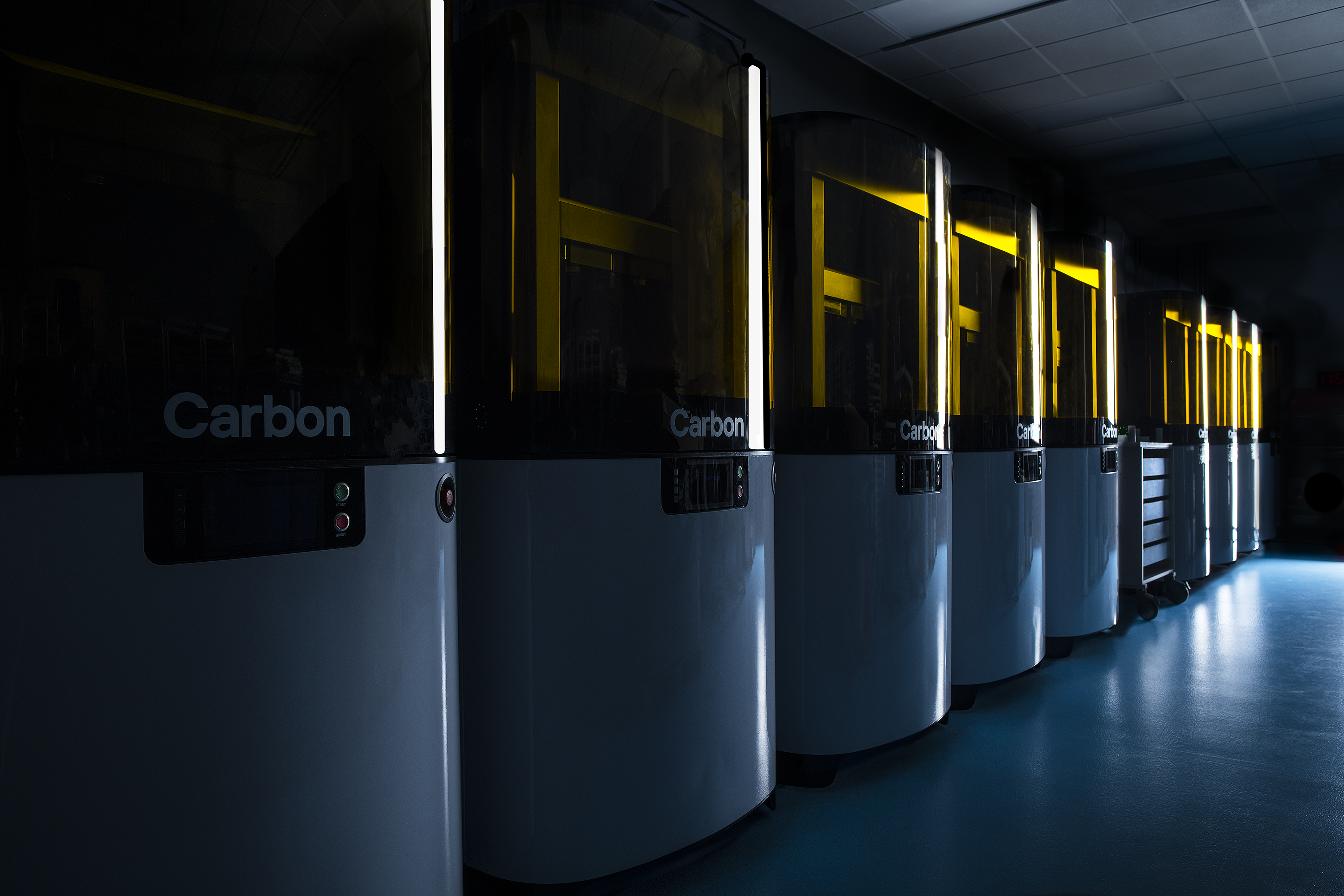Rice University researchers in Houston, Texas, received a $1.3 million grant from the US Department of Defense (DoD) to create the world’s first printable military “smart helmet” using Carbon’s large-format, industrial-grade L1 3D printer. Led by principal investigator Paul Cherukuri, the proposal aims to modernize standard-issue military helmets by 3D printing a nanomaterial-enhanced exoskeleton with embedded sensors to actively protect the brain against kinetic or directed-energy effects, such as from a projectile impacting at very high speeds.
Commenting on the project, Cherukuri suggested current helmets have evolved little since the last century and are still “heavy, bulky, and passive devices.” In fact, the standard-issue modern-day US Advanced Combat Helmet (ACH) that American army troops use hasn’t changed much since the early 2000s. New research on combat helmets even suggests that 100-year-old military helmet technology, like the one used in World War I, offers better blast protection than ACHs.
“Because of advances in sensors and additive manufacturing, we’re now reimagining the helmet as a 3D-printed, AI-enabled, ‘always-on’ wearable that detects threats near or far and is capable of launching countermeasures to protect soldiers, sailors, airmen, and Marines. Essentially, we’re building J.A.R.V.I.S [the fictional artificial intelligence system created by Tony Stark to control Iron Man in the Marvel film franchise],” remarked Cherukuri who is also the Executive Director of Rice’s Institute of Biosciences and Bioengineering.
Cherukuri is not the first to try to recreate a J.A.R.V.I.S-style personal A.I. assistant. In 2016, Facebook founder Mark Zuckerberg built a simple AI to run his home, voiced by legendary actor Morgan Freeman. Beyond Zuckerberg’s personal challenge, researchers from Carnegie Mellon University’s Robotics Institute also developed an innovative A.I. butler called HERB. While these were all incredible attempts at recreating the Marvel character, Cherukuri is going one step further by taking “J.A.R.V.I.S” into the battlefield, just like Iron Man did in the film saga.

Paul Cherukuri from Rice University will lead the “Smart Helmet” project. Image courtesy of Rice University.
For the so-called Smart Helmet program, the team will use the revolutionary L1 platform designed and built by California 3D printer manufacturer Carbon, which can produce large parts in single prints or many small parts for high-throughput production. What is great about this system is that it allows users to make functional prototypes quickly before moving straight to high-volume production, all on the same device.
In addition, the printer’s rapid prototyping function will simplify the process of incorporating the sensors, cameras, batteries, and wiring harnesses the program requires. Once the prototyping is done, the researchers will develop a strong-but-light military-grade helmet that incorporates advances in materials, image processing, AI, haptic feedback, and energy storage.
A “smart helmet task force” was assembled at Rice that would tackle the challenge of creating a self-contained, intelligent system that protects the warfighter at all times. Researchers taking part in the project include Pulickel Ajayan, Rice’s Department of Materials Science and NanoEngineering professor and pioneer in the field of carbon nanotubes; civil and environmental engineer and Rice Provost Reginald DesRoches; electrical and computer engineer Ashok Veeraraghavan; chemistry professor James Tour, and mechanical engineer Marcia O’Malley.
Rice undergraduate students who design and build their mandated capstone projects at the university’s Oshman Engineering Design Kitchen (OEDK)—home to one of the Carbon M2 printers on campus—are also participating in the helmet project and will be working alongside graduate students and postdoctoral researchers to develop the heads-up display.
The protective technology development draws on former projects at the university, like the FlatCam, a flat camera system developed by Veeraraghavan and his colleagues that incorporates sophisticated image processing to eliminate the need for bulky lenses; and Cherukuri’s Teslaphoresis, a kind of tractor beam for nanomaterials that could help create physical and electromagnetic shields inside the helmets.
To develop the sensor-integrated personalized defense system, the DoD awarded the grant to Rice through the Office of Naval Research’s Defense Research University Instrumentation Program (DURIP), which supports university studies essential to high-quality Navy investigation. Rice was chosen along with another 150 universities and colleges nationwide to carry out its cutting-edge research.
“We’ve got a lot of innovative tech in university labs that have never seen the light of day,” Cherukuri stated. “We’re simply developing that technology into a device that gives the men and women protecting our country a real chance at coming home safe and sound. This is for them.”
Subscribe to Our Email Newsletter
Stay up-to-date on all the latest news from the 3D printing industry and receive information and offers from third party vendors.
You May Also Like
Profiling a Construction 3D Printing Pioneer: US Army Corps of Engineers’ Megan Kreiger
The world of construction 3D printing is still so new that the true experts can probably be counted on two hands. Among them is Megan Kreiger, Portfolio Manager of Additive...
US Army Corps of Engineers Taps Lincoln Electric & Eaton for Largest 3D Printed US Civil Works Part
The Soo Locks sit on the US-Canadian border, enabling maritime travel between Lake Superior and Lake Huron, from which ships can reach the rest of the Great Lakes. Crafts carrying...
Construction 3D Printing CEO Reflects on Being Female in Construction
Natalie Wadley, CEO of ChangeMaker3D, could hear the words of her daughter sitting next to her resounding in her head. “Mum, MUM, you’ve won!” Wadley had just won the prestigious...
1Print to Commercialize 3D Printed Coastal Resilience Solutions
1Print, a company that specializes in deploying additive construction (AC) for infrastructure projects, has entered an agreement with the University of Miami (UM) to accelerate commercialization of the SEAHIVE shoreline...






























